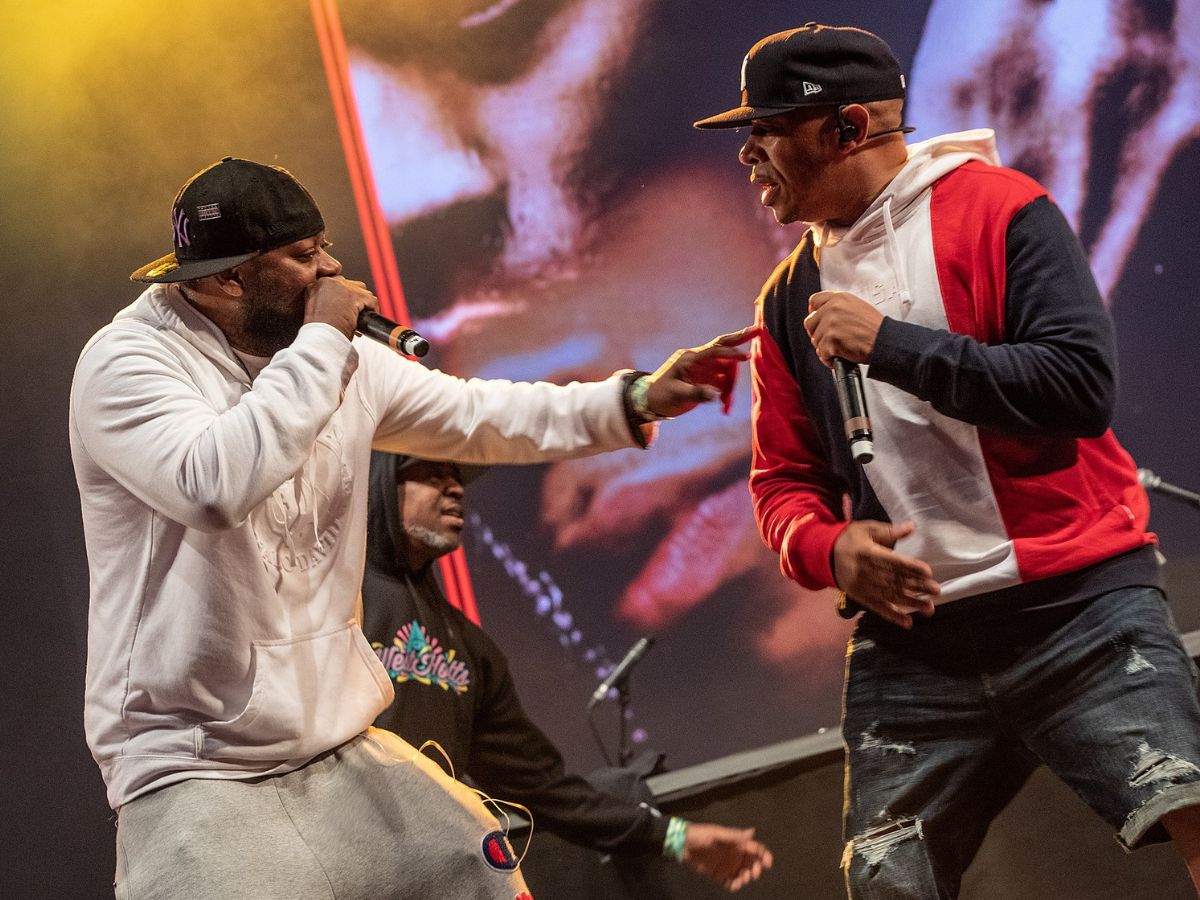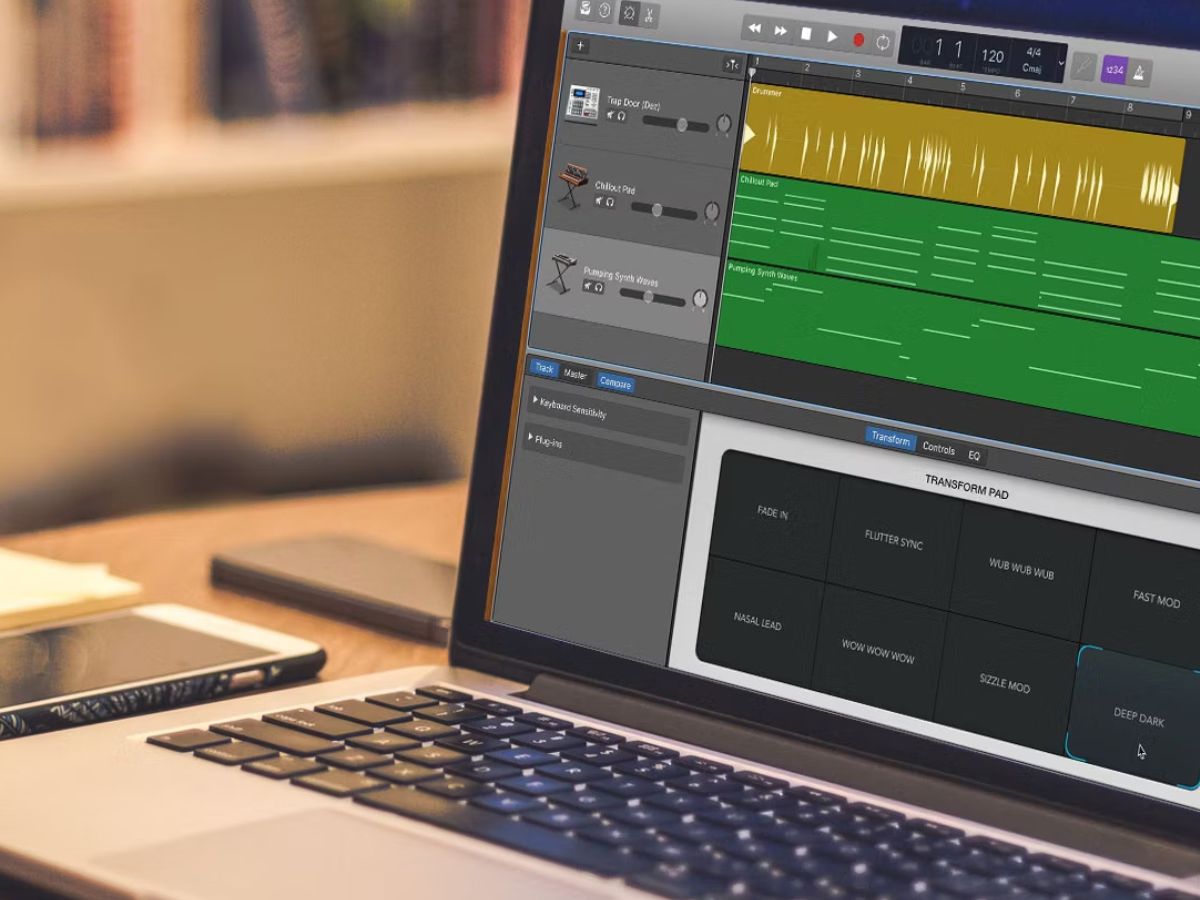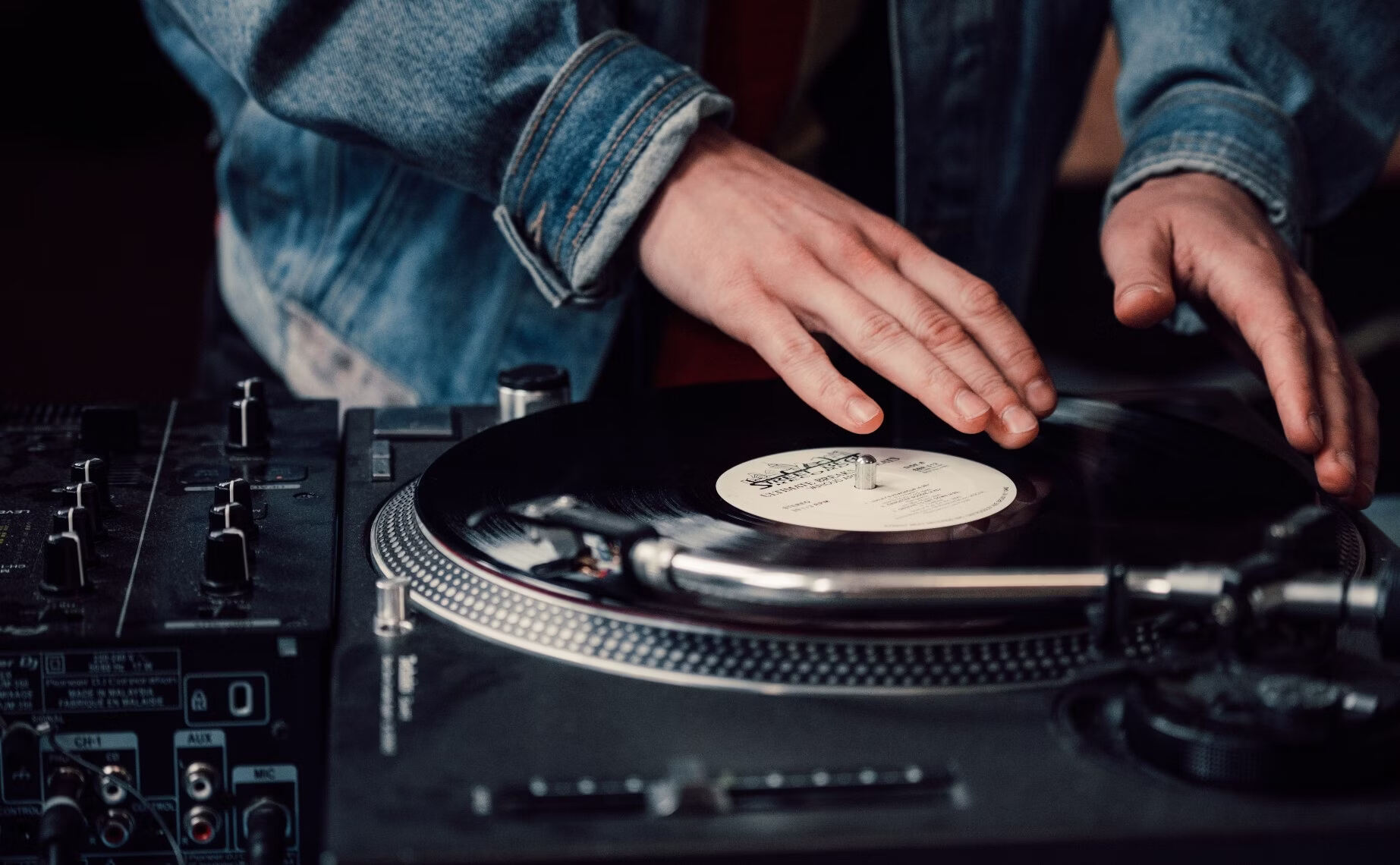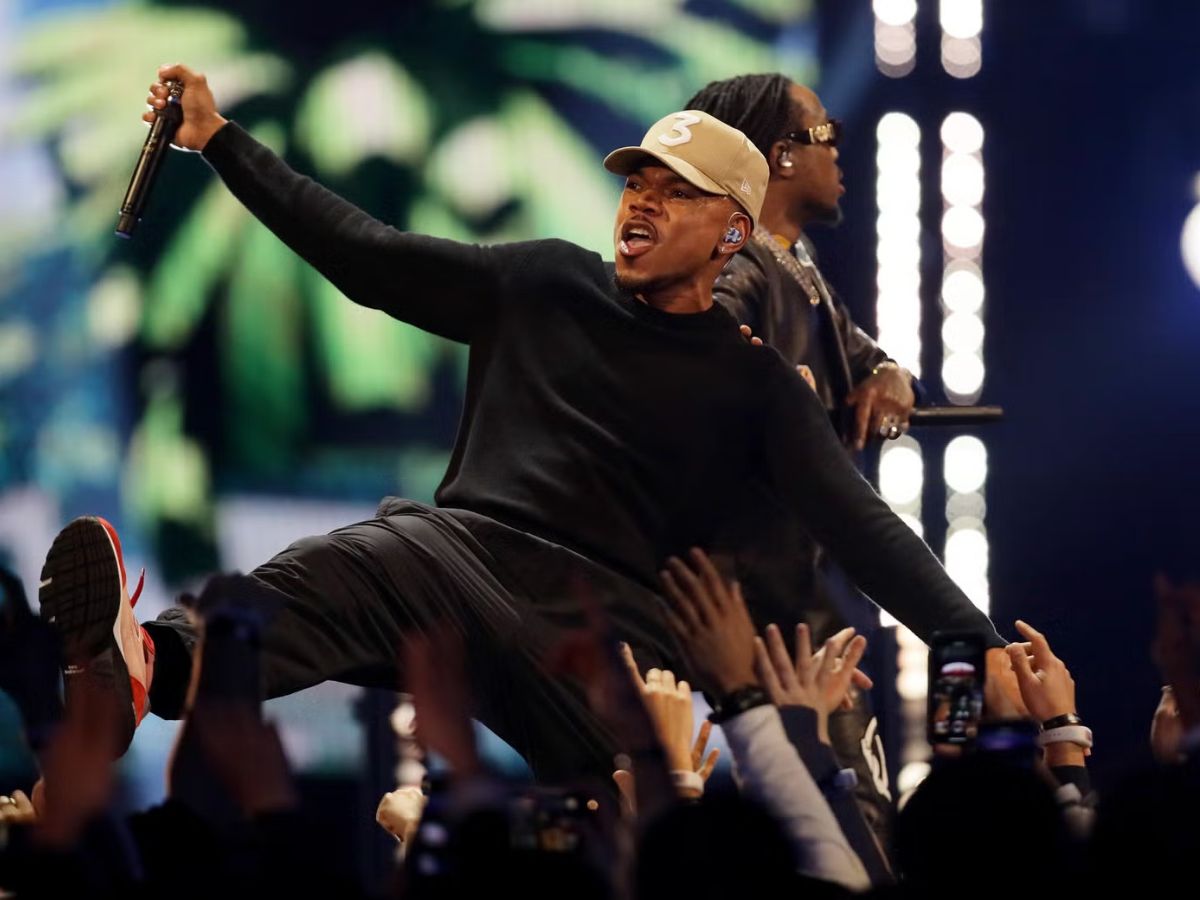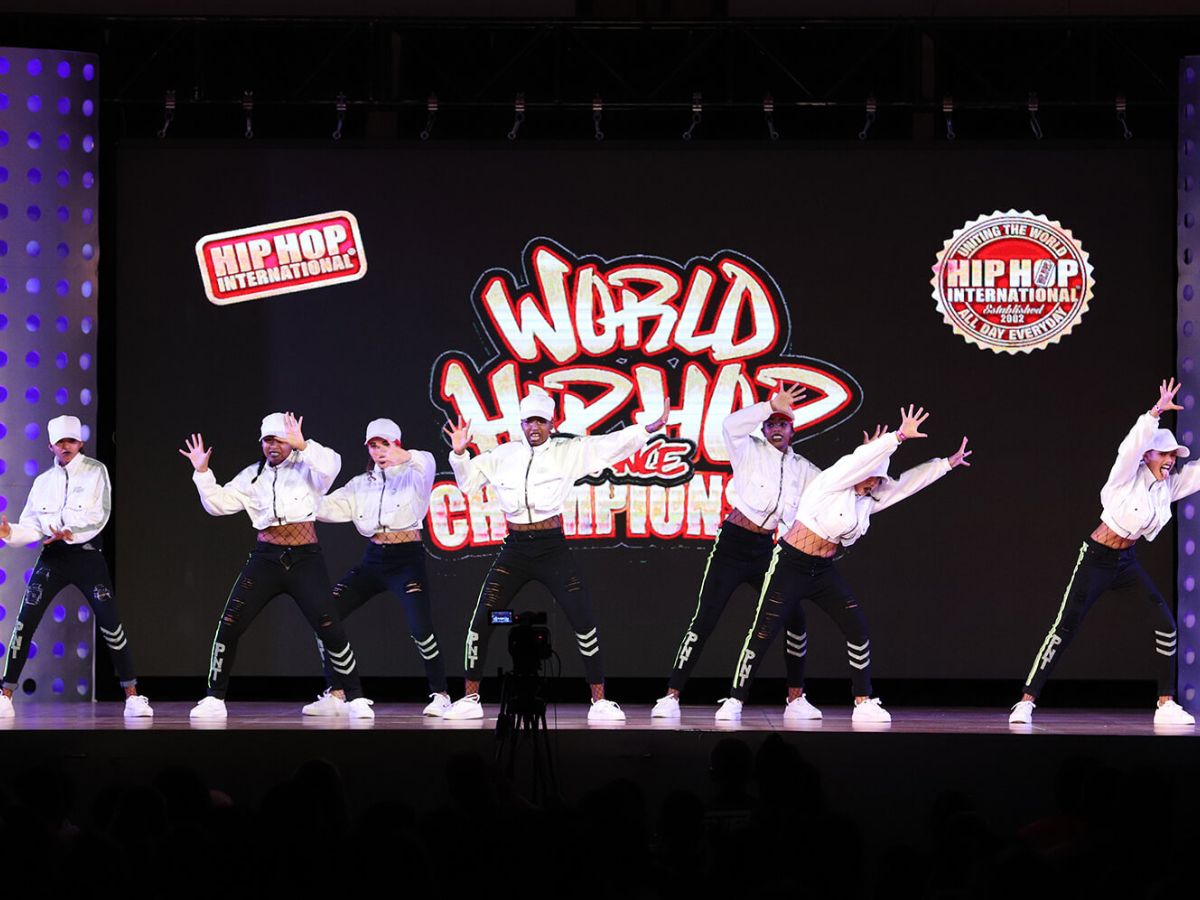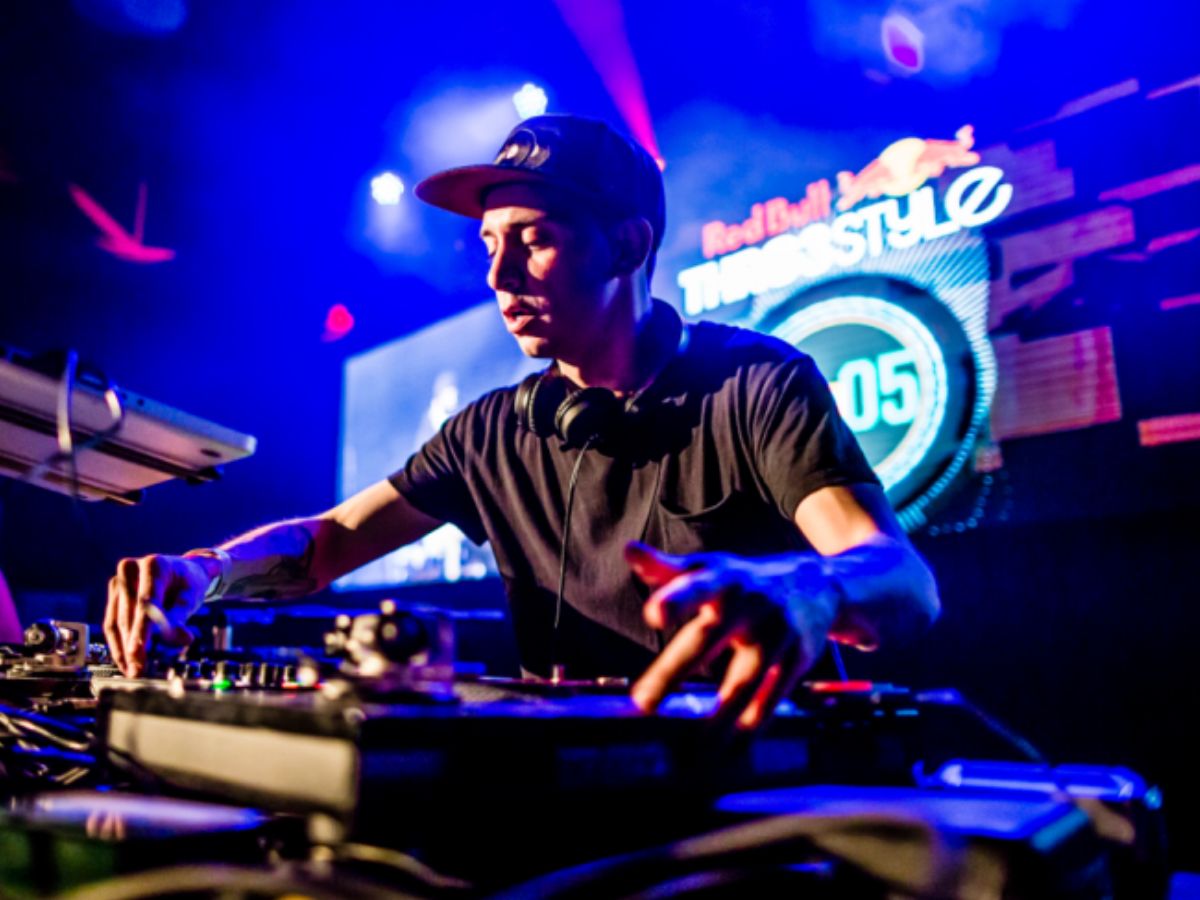

Hip Hop
Thats What Makes It Hip Hop
Modified: January 22, 2024
Discover the essence of Hip Hop and why it has become a cultural phenomenon. Explore the beats, rhymes, and messages that define the Hip Hop movement.
(Many of the links in this article redirect to a specific reviewed product. Your purchase of these products through affiliate links helps to generate commission for AudioLover.com, at no extra cost. Learn more)
Table of Contents
Introduction
Welcome to the world of Hip Hop – a dynamic and influential genre of music and culture that has captivated millions of people worldwide. From its humble beginnings in the streets of New York City to its global dominance today, Hip Hop has had a profound impact on society, art, fashion, and beyond.
But what exactly is Hip Hop? Often misunderstood and misinterpreted, it is more than just music. It is a complete cultural movement that encompasses a unique blend of music, dance, visual art, fashion, and attitude. Hip Hop emerged in the 1970s as a creative outlet for urban youth, providing a voice for marginalized communities and expressing their struggles and aspirations.
At its core, Hip Hop is a catalyst for self-expression and empowerment. It speaks to the realities and experiences of its creators and listeners, addressing social and political issues, celebrating cultural heritage, and promoting individuality.
In this article, we will delve into the historical roots of Hip Hop, explore its various elements, and examine its lasting impact on popular culture. From rap and emceeing to DJing and turntablism, breakdancing (B-boying/B-girling), graffiti art, and fashion, Hip Hop is a multifaceted phenomenon that continues to evolve and push boundaries in unexpected ways.
So, fasten your seatbelts as we take a journey through the vibrant and dynamic world of Hip Hop. Let’s uncover the stories behind its inception, the individuals who shaped its history, and the creative expression that continues to resonate with millions of people around the globe.
Definition of Hip Hop
Defining Hip Hop is no easy task, as it encompasses a wide array of artistic expressions and cultural elements. However, at its core, Hip Hop can be described as a cultural movement that originated in African American and Afro-Caribbean communities in the Bronx, New York City, in the 1970s.
Hip Hop encompasses four main elements – rap and emceeing, DJing and turntablism, breakdancing, and graffiti art. These elements form the pillars of the culture, representing different forms of artistic expression and communication.
Rap, or emceeing, is often the most recognizable aspect of Hip Hop. It involves rhythmic and poetic verbal delivery over a beat, typically addressing social issues, personal experiences, or storytelling. Rap lyrics can be intricate and thought-provoking, serving as a vehicle for self-expression and cultural commentary.
DJing and turntablism are essential components of Hip Hop culture. DJs manipulate vinyl records and create new sounds by mixing and scratching them on turntables. This art form has its roots in Jamaica, where DJs would play and remix records to entertain their audiences.
Breakdancing, also known as B-boying or B-girling, is a highly physical and acrobatic dance style that originated in the streets of the Bronx. It involves intricate footwork, power moves, and freezes, showcasing the athleticism and creativity of the dancer.
Graffiti art is another prominent element of Hip Hop, often seen as a visual representation of the culture. Graffiti artists use spray cans to create intricate murals and tags, ranging from simple signatures to elaborate pieces that convey messages or reflect the artist’s individual style.
It is important to note that Hip Hop is not limited to these four elements alone. It is a culture that embraces individuality and encourages self-expression through various mediums, including fashion, language, and entrepreneurial pursuits.
Overall, Hip Hop is a rich and diverse cultural movement that goes beyond music. It is a powerful tool for storytelling, social commentary, and self-empowerment. It has transcended cultural and geographical boundaries, uniting people from different backgrounds and providing a platform for marginalized voices to be heard.
Historical Roots of Hip Hop
To understand the historical roots of Hip Hop, we must delve into the social and cultural context of the 1970s New York City, specifically the Bronx. During this time, the Bronx was plagued by poverty, crime, and urban decay. However, amidst these challenging circumstances, a vibrant cultural movement was born.
The roots of Hip Hop can be traced back to block parties and neighborhood gatherings in the Bronx, where DJs and emcees would entertain the crowd with their music and lyrical skills. These gatherings provided an escape from the harsh realities of everyday life and acted as catalysts for creativity and self-expression.
One influential figure in the early days of Hip Hop was Jamaican-born DJ Kool Herc. He is often credited with creating the blueprint for modern DJing and turntablism. Herc pioneered the use of two turntables and a mixer to extend the instrumental breaks of songs, effectively creating an endless loop of beats perfect for dancing.
With the rise of DJing, emcees also emerged as key players in the developing Hip Hop scene. Emcees, also known as MCs, would use their lyrical skills to energize the crowd and create a sense of unity and excitement. They became the vocal representation of the culture, providing a voice for their communities.
Another pivotal influence on the early Hip Hop scene was Afrika Bambaataa, a former gang member turned community leader. Bambaataa recognized the power of Hip Hop as a means to bring people together and transform their lives. He founded the Universal Zulu Nation, an organization dedicated to promoting peace, unity, and social empowerment through Hip Hop culture.
As Hip Hop gained momentum, it started to extend beyond the music itself. Graffiti art became an integral part of the culture, with artists using spray cans to create colorful murals and tags on the walls of the city. Graffiti art served as a visual representation of the community’s identity and a way to reclaim public spaces.
Breakdancing, or B-boying/B-girling, also emerged as a vital element of Hip Hop. This dynamic and expressive dance style drew inspiration from various sources, including funk and martial arts movements. Breakdancing provided an outlet for physical expression and allowed dancers to showcase their skills and creativity.
The historical roots of Hip Hop are deeply intertwined with the socio-economic struggles faced by marginalized communities in the Bronx during the 1970s. However, it is important to recognize that Hip Hop’s influence and reach have extended far beyond its humble beginnings. Today, it is a global phenomenon that continues to evolve and inspire countless individuals around the world.
Elements of Hip Hop Culture
Hip Hop culture is a rich tapestry of artistic expressions, values, and practices that collectively define the movement. It goes beyond just music and encompasses various elements that contribute to its unique identity and impact. Let’s explore the key elements of Hip Hop culture:
- Rap and Emceeing: Rap, or emceeing, is the vocal component of Hip Hop. It involves rhythmically delivering lyrics over a beat, often addressing personal experiences, social issues, or storytelling. Emcees use their words as a powerful tool for self-expression and communication.
- DJing and Turntablism: DJing and turntablism are vital elements of Hip Hop culture. DJs use turntables and mixers to manipulate records, creating unique sounds, beats, and transitions. They serve as the backbone of Hip Hop music, providing the beats and selecting the tracks that keep the party going.
- Breakdancing (B-boying/B-girling): Breakdancing is a highly energetic and acrobatic dance form that originated in the Bronx. It incorporates intricate footwork, power moves, spins, and freezes. Breakdancers express their creativity and athleticism through fluid movements and dynamic performances.
- Graffiti Art: Graffiti art is an integral part of Hip Hop culture, often seen as a visual representation of its expression. Graffiti artists use spray cans to create intricate murals, tags, and artwork on public walls and surfaces. Graffiti art allows artists to communicate their identity, share messages, and reclaim spaces.
- Fashion and Style: Hip Hop fashion is known for its bold and distinctive style. From baggy clothing and oversized accessories to sneakers, hoodies, and unique hairstyles, fashion plays a crucial part in the Hip Hop aesthetic. It allows individuals to express their individuality, creativity, and cultural identity.
Each of these elements contributes to the overall experience of Hip Hop culture, creating a vibrant and dynamic tapestry of creativity, self-expression, and cultural identity. Together, they form the foundation upon which the Hip Hop movement thrives and continues to evolve.
Rap and Emceeing
Rap, also known as emceeing, is one of the most prominent and recognizable elements of Hip Hop culture. It is a form of musical and poetic expression that involves rhythmically delivering lyrics over a beat. Rap serves as a powerful tool for storytelling, social commentary, and personal reflection.
Rap originated in the late 1970s in the Bronx, New York, as a way for African American and Afro-Caribbean communities to express their experiences, struggles, and aspirations. It provided a platform for individuals to voice their thoughts and emotions, often addressing social and political issues that were affecting their communities.
Emcees, or MCs, are the artists who perform rap lyrics. They use their words and vocal abilities to captivate listeners, delivering their message with energy, skill, and authenticity. Emceeing is more than just rhythmically speaking. It requires a deep understanding of musicality, wordplay, storytelling techniques, and stage presence.
One of the defining features of rap is its emphasis on lyrical content. Rap lyrics can range from personal storytelling to social commentary and everything in between. They often reflect the experiences, perspectives, and cultural references of the emcee. Rap has the power to convey powerful messages and shed light on social injustices, systemic issues, and personal struggles.
Another aspect of rap that sets it apart is its ability to showcase the individuality and creativity of the emcee. Through their unique flow, wordplay, rhyme schemes, and delivery style, emcees develop their own distinctive sound and persona. This allows them to connect with their audience on a personal level, creating a sense of authenticity and relatability.
Rap can take on various forms and styles. Some emcees focus on fast-paced, intricate lyricism, while others prioritize storytelling and narrative-driven verses. The diversity within rap allows for a broad range of voices, perspectives, and artistic expressions.
Furthermore, rap has evolved over the years to incorporate different sub-genres and styles. From hardcore and gangsta rap to conscious and alternative rap, there is a rap sub-genre for every taste and preference. This versatility and adaptability have contributed to the widespread popularity and influence of rap music across the globe.
Rap has transcended cultural and geographical boundaries, becoming a global phenomenon embraced by people of various backgrounds. It has given rise to countless talented artists who have made significant contributions to the music industry and popular culture.
Overall, rap and emceeing are not just forms of music; they are vehicles for self-expression, cultural commentary, and empowerment. They provide a platform for artists to share their stories and connect with audiences, while also serving as a voice for communities and challenging societal norms.
DJing and Turntablism
DJing and turntablism are integral components of Hip Hop culture, playing a crucial role in the creation and evolution of the genre. DJs use turntables, mixers, and their musical knowledge to manipulate records and create unique sounds, beats, and transitions.
The art of DJing emerged in the early days of Hip Hop in the 1970s. DJs like Kool Herc, Grandmaster Flash, and Afrika Bambaataa pioneered the techniques that would shape the future of Hip Hop music. They recognized the power of taking snippets of songs and extending the instrumental breaks to create a continuous groove for people to dance to.
One of the fundamental skills of a DJ is beat matching, which involves synchronizing the beats of two songs and smoothly transitioning between them. DJs accomplish this by using their ears and a keen sense of timing, adjusting the speed of the records or using pitch control to achieve a seamless blend.
Turntablism takes DJing a step further, incorporating additional techniques and skills to create intricate and creative sounds. Turntablists use scratching, beat juggling, and other advanced techniques to manipulate vinyl records in real-time, adding their unique touch and style to the mix. These techniques require precision, dexterity, and an intimate knowledge of the records being used.
Scratching, in particular, is a distinctive technique synonymous with turntablism. It involves manipulating the record back and forth against the needle while the sound is amplified, resulting in rhythmic and percussive sounds. Scratching allows DJs to add flair, creativity, and personal expression to their mixes, often becoming a highlight of their performances.
DJ battles and competitions have played a significant role in the growth and development of turntablism. These events showcase the technical skills of DJs, challenging them to push the boundaries of what is possible with the turntables. The DMC World DJ Championships is one of the most prestigious competitions in the world, where turntablists from around the globe compete for recognition and acclaim.
The advent of technology has also influenced DJing and turntablism. Traditional vinyl records have been supplemented or replaced by digital formats, such as CDs and digital audio files. DJs now use software and controllers to manipulate and mix tracks, allowing for greater flexibility and creativity in their performances.
DJing and turntablism have not only shaped the sound of Hip Hop but have also influenced other genres of music. The skills and techniques developed by DJs have been incorporated into various styles, from electronic music to pop and rock.
Ultimately, DJing and turntablism showcase the artistry and creativity of the DJ as they skillfully mix, blend, and manipulate music. They form an integral part of Hip Hop culture, providing the foundation for emcees and dancers to thrive and creating unforgettable experiences on the dancefloor.
Breakdancing (B-boying/B-girling)
Breakdancing, also known as B-boying (for males) or B-girling (for females), is a dynamic and acrobatic dance style that is closely associated with Hip Hop culture. Originating in the streets of the Bronx in the 1970s, breakdancing quickly became a significant element of the movement, captivating audiences with its gravity-defying moves and rhythmic footwork.
Breakdancing is characterized by a combination of intricate footwork, power moves, freezes, and dynamic floorwork. It showcases the dancer’s agility, strength, and creativity as they navigate through various athletic and acrobatic movements.
One of the defining features of breakdancing is the foundation of toprock, downrock, freezes, and power moves. Toprock refers to the dance performed while standing up, incorporating fluid footwork, steps, and gestures. Downrock, also known as “footwork,” involves intricate movements performed on the floor using hands, knees, and legs.
Freezes are static positions that the dancer holds, showcasing strength, balance, and body control. Common freezes include the handstand freeze, baby freeze, or headstand freeze. Each freeze adds a unique visual element to the dance, emphasizing the dancer’s control and creativity.
Power moves are dynamic and athletic moves that require strength, momentum, and precision. These moves include windmills, flares, headspins, and airflares. Power moves captivate audiences with their high-energy and gravity-defying nature, often becoming the highlight of breakdancing performances.
Breakdancing is not solely about individual moves; it also involves battles and cyphers. Battles are competitive dance-offs where dancers showcase their skills and creativity against each other. Cyphers, on the other hand, are informal gatherings where dancers take turns displaying their moves in a freestyle fashion, feeding off the energy of the collective crowd.
Throughout its history, breakdancing has evolved, with new moves and styles constantly emerging. Various crews and dance crews have developed their signature steps and routines, adding their unique flair and personality to the dance.
Breakdancing is not limited to any specific location or culture. It has spread around the globe, with thriving breakdance communities in countries as diverse as the United States, Japan, France, Brazil, and South Korea. These communities celebrate the dance form, host events, and provide a platform for dancers to showcase their skills and connect with each other.
Beyond its entertainment value, breakdancing has served as a way for individuals to overcome challenges, express themselves creatively, and build a strong sense of community. It promotes discipline, self-expression, and a sense of belonging, providing individuals with an outlet for their emotions and a platform to share their stories.
Breakdancing’s influence extends beyond the Hip Hop community, with its impact felt in areas such as music videos, movies, and even Olympic recognition. In 2024, breakdancing will make its debut as an official Olympic sport, further solidifying its place in the mainstream and showcasing its cultural significance.
Breakdancing continues to evolve and inspire new generations of dancers, pushing the boundaries of what is possible. It remains an integral part of Hip Hop culture, showcasing the power of movement, creativity, and self-expression.
Graffiti Art
Graffiti art is a prominent element of Hip Hop culture, often seen as a visual representation of its creativity and rebellious spirit. Originating in the 1970s alongside the rise of Hip Hop in New York City, graffiti art quickly became a powerful means of self-expression for marginalized communities.
Graffiti artists, also known as writers, use spray cans, markers, and other tools to create intricate murals, tags, and artworks on public walls, trains, and other surfaces. This form of art allows individuals to leave their mark on the urban landscape, reclaiming public spaces and making their voices heard.
One of the distinctive features of graffiti art is its underground nature. Many artists operate under pseudonyms to maintain anonymity and avoid legal repercussions. This element of secrecy adds to the thrill and rebellion associated with graffiti art, as writers navigate the city to find the perfect spots to showcase their skills.
Graffiti art goes beyond simple handwriting or tagging. It encompasses various styles, techniques, and themes. From colorful and abstract pieces to highly detailed and realistic portraits, graffiti art comes in a wide range of forms, showcasing the artists’ versatility and creativity.
While some graffiti art is spontaneous and freestyle, other pieces are carefully planned and executed. Artists may sketch their designs beforehand or use stencils to create intricate, multi-layered artworks. This blend of creativity and technical skill makes graffiti art a dynamic and engaging form of expression.
Graffiti art allows artists to convey powerful messages, share social commentary, and challenge the status quo. It can serve as a platform for marginalized voices, addressing issues such as inequality, racism, and social injustices. Graffiti art has the power to spark conversations and make people stop and think about the world around them.
However, it is essential to distinguish between graffiti art and illegal vandalism. While illegal graffiti may involve defacing private property without permission, graffiti art is a legitimate form of artistic expression that can bring life and beauty to urban spaces. Many cities now embrace graffiti art as a form of public art, providing legal walls and designated spaces for artists to showcase their talent.
Graffiti art has had a significant impact on popular culture, influencing graphic design, fashion, and even the world of contemporary art. Many graffiti artists have successfully transitioned their skills from the streets to galleries, gaining recognition in the art world.
Overall, graffiti art serves as a powerful testament to the creativity, resilience, and individuality within Hip Hop culture. It is a visual representation of the movement’s rebellious spirit, challenging societal norms, and celebrating personal expression. Graffiti art continues to evolve and inspire new generations of artists, leaving an indelible mark on the urban landscape.
Fashion and Style
Fashion has always been an integral part of Hip Hop culture, representing individuality, creativity, and cultural expression. From the early days of the movement to its global dominance today, Hip Hop fashion has continuously evolved, leaving a lasting impact on the world of style.
One of the defining characteristics of Hip Hop fashion is its ability to challenge traditional norms and push boundaries. Hip Hop style often embraces oversized, baggy clothing as a symbol of freedom and rebellion against societal expectations. This emphasis on comfort and self-expression allowed individuals to break free from mainstream fashion trends and showcase their own unique style.
One iconic item in Hip Hop fashion is the tracksuit, which was popularized by artists like Run-DMC and LL Cool J. Tracksuits became a symbol of casual coolness, worn with Adidas sneakers and topped off with a fedora or a bucket hat. This laid-back and athletic aesthetic became synonymous with Hip Hop fashion in the 1980s.
As the 1990s rolled in, streetwear became a dominant force in Hip Hop fashion. Artists like Tupac Shakur and The Notorious B.I.G. popularized baggy jeans, graphic t-shirts, and oversized hoodies. This era embraced an edgier and more urban aesthetic, reflecting the grittier realities of inner-city life.
Jewelry has also played a significant role in Hip Hop fashion. Artists adorned themselves with gold chains, oversized pendant necklaces, and chunky bracelets as a sign of prosperity and success. This ‘bling’ culture became a symbol of achievement within the Hip Hop community.
Sneakers are another essential element of Hip Hop fashion. Artists and enthusiasts are known for their love of sneakers, with limited edition releases and rare finds becoming highly coveted items. Brands like Nike, Adidas, and Reebok have collaborated with rappers and artists to create signature shoe lines, further solidifying the connection between Hip Hop and sneaker culture.
As Hip Hop fashion continues to evolve, it embraces elements from various subcultures and high fashion. Many artists and influencers have started their own clothing lines, combining streetwear aesthetics with high-end design. This fusion of street style and luxury fashion has cemented Hip Hop’s influence on the fashion industry.
It is important to note that Hip Hop fashion is not bound by gender or conform to traditional norms. Gender-fluid and gender-neutral styles are prevalent in the Hip Hop community, allowing individuals to express themselves authentically and freely.
Overall, Hip Hop fashion represents more than just clothing; it is a statement of identity, creativity, and self-expression. It continues to inspire and influence the fashion world, pushing boundaries and challenging mainstream norms. Hip Hop fashion celebrates individuality and empowers people to embrace their unique style without fear of judgment.
Current State of Hip Hop
Hip Hop has come a long way from its humble beginnings in the streets of New York City. Today, it is a global phenomenon that has had a significant impact on music, culture, and society as a whole. The current state of Hip Hop is vibrant, diverse, and continuously evolving.
One major development in the modern Hip Hop landscape is the rise of streaming platforms and digital distribution. Platforms like Spotify, Apple Music, and SoundCloud have democratized the music industry, allowing independent artists to reach wider audiences without relying on traditional record labels. This accessibility has led to an influx of new voices and styles within the Hip Hop genre.
The influence of social media cannot be overlooked when discussing the current state of Hip Hop. Platforms like Instagram, Twitter, and TikTok have provided artists with direct access to their fans, enabling them to cultivate large and loyal followings. Artists can now build their careers and promote their music through these online channels, reaching global audiences instantaneously.
The current Hip Hop landscape is characterized by a wide range of sub-genres and styles. From trap and mumble rap to conscious and alternative Hip Hop, there is something for every listener. Artists like Kendrick Lamar, J. Cole, Cardi B, Drake, and Travis Scott have dominated the charts and pushed the boundaries of what is possible in Hip Hop.
Collaborations have also become a significant part of the Hip Hop scene. Artists from different backgrounds and genres are coming together to create groundbreaking and innovative music. These collaborations bridge the gap between genres, resulting in chart-topping hits and cross-cultural appreciation.
Lyrically, Hip Hop continues to address various social issues and reflect the realities of its creators and listeners. Artists use their platforms to shed light on systemic racism, police brutality, poverty, and other pressing social and political matters. The genre serves as a voice for the marginalized and a catalyst for change.
Additionally, the global influence of Hip Hop has never been stronger. Artists from around the world, including the UK, France, South Africa, and South Korea, are making waves in the Hip Hop scene, infusing their own cultural flavors and perspectives into the genre. This cross-cultural exchange has further diversified and enriched the Hip Hop landscape.
Despite its continued success, Hip Hop is not without criticism. Some argue that certain sub-genres perpetuate negative stereotypes and promote materialism or violence. However, many artists and fans believe in the power of Hip Hop to inspire, educate, and uplift communities. They recognize its potential to bring people together, foster cultural understanding, and ignite positive change.
The future of Hip Hop remains bright and promising. As the genre continues to evolve, it will undoubtedly shape popular culture and influence future generations. Whether it is through its music, fashion, art, or activism, Hip Hop will continue to be a powerful force that resonates with people around the world.
Influence of Hip Hop on Popular Culture
Hip Hop has had a profound influence on popular culture, transcending its origins as a music and cultural movement to become a global phenomenon that has shaped various aspects of society. From music to fashion, art to language, Hip Hop’s impact is undeniable.
One of the most significant contributions of Hip Hop to popular culture is its influence on music. Hip Hop has become the dominant genre in the mainstream, permeating charts and radio airwaves. It has not only influenced other genres such as pop, R&B, and rock, but it has also given rise to sub-genres like trap and mumble rap.
Hip Hop has also revolutionized the fashion world. From streetwear and sneakers to luxury brands, the influence of Hip Hop fashion is evident on runways and in clothing stores around the globe. Artists and trends within the Hip Hop community have set the stage for fashion statements that embody individuality, comfort, and cultural expression.
Graffiti art, a pillar of Hip Hop culture, has had a significant impact on the art world. Graffiti-inspired murals now adorn city streets and galleries, breaking down the barriers between traditional art forms and popular culture. The bold, vibrant, and politically charged nature of graffiti art has influenced contemporary artists and challenged conventional notions of what constitutes art.
The language and slang of Hip Hop have seeped into everyday vernacular. Phrases like “dope,” “fly,” and “lit” originated within the Hip Hop community and have become part of mainstream language. Hip Hop has revolutionized the way people express themselves, with its creative use of wordplay and storytelling techniques permeating literature, film, and television.
Beyond entertainment, Hip Hop has had a significant influence on social issues and activism. Artists use their platforms to shine a light on inequalities, police brutality, and social injustices. The genre has become a voice for the marginalized, encouraging dialogue, and advocating for positive change. Hip Hop’s influence on activism has extended beyond music to grassroots movements and community empowerment initiatives.
The impact of Hip Hop on popular culture is not limited to the United States; it has become a global phenomenon. Artists from around the world have embraced and adapted the Hip Hop culture, infusing their local flavors and perspectives into the genre. This cross-cultural exchange has enriched Hip Hop, opening doors for collaborations, international recognition, and a broader understanding of diverse cultures.
Moreover, Hip Hop has provided an avenue for entrepreneurship and economic empowerment. From record labels and clothing lines to endorsement deals and branding, artists have leveraged their success in Hip Hop to build thriving businesses. They have inspired others to pursue their entrepreneurial ambitions, creating opportunities for themselves and their communities.
Overall, Hip Hop’s influence on popular culture is vast and far-reaching. It has transformed music, fashion, art, language, and activism, leaving an indelible mark on society. Hip Hop’s ability to connect people, bridge different cultures, and empower individuals continues to shape and define popular culture in profound ways.
Conclusion
Hip Hop is a cultural movement that has left an indelible mark on music, fashion, art, and language. From its humble beginnings in the streets of the Bronx to its global reach today, Hip Hop has evolved into a powerful force of self-expression, empowerment, and social change.
Defined by its four key elements – rap and emceeing, DJing and turntablism, breakdancing, and graffiti art – Hip Hop encompasses a diverse range of artistic expressions that resonate with people from all walks of life.
Rap and emceeing serve as the voice of the movement, addressing social issues, sharing personal experiences, and telling stories that reflect the realities of marginalized communities. DJs and turntablists manipulate records to create unique beats and sounds, while breakdancers captivate audiences with their high-energy footwork and daring moves. Graffiti art brings vibrant visuals to the streets, reclaiming public spaces and challenging conventional notions of art. Together, these elements form a rich cultural tapestry that continues to inspire and captivate.
Hip Hop’s influence extends beyond its cultural manifestations, infiltrating popular culture in many ways. It has revolutionized music, fashion, and art, shaping the mainstream and influencing artists across genres. The language and slang of Hip Hop have become part of everyday vocabulary, while its activism and social commentary have sparked important conversations and fueled movements for change.
Furthermore, Hip Hop’s impact is not limited to one region or culture. It has become a global phenomenon, with artists and enthusiasts around the world embracing the movement and infusing it with their own unique perspectives. Hip Hop has broken down barriers, fostering cultural exchange and promoting understanding.
In conclusion, Hip Hop’s enduring legacy lies in its ability to empower individuals, challenge societal norms, and provide a platform for creativity and self-expression. It has transcended its roots in the Bronx to become a universal language spoken and appreciated by millions. As Hip Hop continues to evolve, it will undoubtedly shape the future of music, art, fashion, and culture, leaving an everlasting impact on society.

